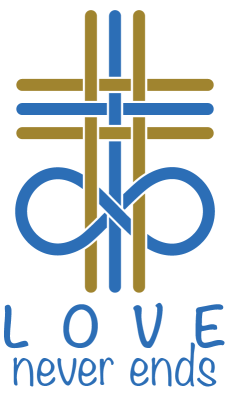ADVENT: A MERGER OF LITURGY AND CULTURE
a series by Dick Fichter, parishioner
| THE FIRST CANDLE Family traditions |
| Advent has always been an exciting time for me because of the joy and anticipation brought by having an Advent wreath at home, lighting it at dinner time with my family, and at church, sharing in its lighting and prayers with family and friends. Our children especially enjoyed the Advent Calendar. This calendar has the consecutive days of Advent covered with flaps which opened daily to show a picture of a Christmas scene starting with the first day of Advent leading up to Christmas. It was always fun to watch the kids with anticipation open the flap to enjoy the scene for the day. I am told that some Advent calendars even had slots which held a small gift or a piece of chocolate for the lucky person opening it. It was also exciting to visit the Ellipse in Washington with my family to enjoy the light and warmth of a burning Yule log and view the circle of Christmas trees from each State and Territory and see the Christmas tree lit by the President. These of course are not liturgical, but the Christmas tree and Yule log are customs and traditions introduced in northern European countries to bring comfort and light to the darkest time of the year and later were merged into our Christmas celebration as part of our culture. Regrettably, the Park Service Yule log tradition on the Ellipse has been discontinued after fifty years of providing light and warmth to the public. However, it still takes place in some parts of this area sponsored by other groups. Now that Epiphany has a fire pit, perhaps there may be the beginning of a Yule log tradition at Epiphany this year. Did you know: As noted from National Geographic,” the earth’s axial tilt (also known as the obliquity of the ecliptic) is about 23.5 degrees. Due to this axial tilt, the sun shines on different latitudes at different angles throughout the year.” This causes the seasons, which means long nights in the winter for the northern hemisphere which affects people and their culture as exemplified by the burning of the Yule log to provide light and warmth during the winter and hope for the return of spring and the sun. The Advent Wreath, a German tradition, is a circle of greenery, marked by four candles that represent the four Sundays of the season of Advent. After the lighting of the first candle an additional candle is lit as each new Sunday is celebrated in Advent. Clearly the Advent wreath, which was an earlier cultural practice, has become part of the church’s liturgy. Advent wreaths are used both in churches and in homes for devotional purposes. The candles may be blue, purple, or lavender, depending on local custom. In some traditions, as at Epiphany, there is a larger white center candle which is lit on Christmas eve or on Christmas day. The lighting of this white candle symbolizes the light of Christ that has come into the world. Purple was a long-held tradition because Advent was considered to be a penitential season of self-examination and introspection as we prepare for Christ’s coming. Many churches are using blue now to reflect the change in season and to emphasize Advent as a season of joyous expectation. (A cultural change, I suspect, to place less emphasis on the penitential aspect of the season.) The definition of Advent from the Episcopal glossary of terms is that the name is derived from a Latin word for “coming.” The season is a time of preparation and expectation for the coming celebration of our Lord’s nativity, and for the final coming of Christ “in power and glory.” (Emphasis added.) The first part of the definition I was well acquainted with but not so much the latter. Clearly my focus has been blue and not purple. This Sunday we will light the first blue candle of the Advent wreath and the following scripture read with the following, or another, prayer. Scripture – Luke 1:5-25 or Mark 13:24-37 Prayer – Almighty God, give us grace to cast away the works of darkness, and put on the armor of light, now in the time of this mortal life in which your Son Jesus Christ came to visit us in great humility; that in the last day, when he shall come again in his glorious majesty to judge both the living and the dead, we may rise to the life immortal; through him who lives and reigns with you and the Holy Spirit, one God, now and for ever. Amen. Next week we will explore the biblical basis for Advent and prepare to light the second blue candle. |

| God Loves You. No Exceptions. Hypothermia Shelter: 12/10 – 12/17 Christmas Pageant Rehearsal: 12/10 after worship Christmas Pageant: 12/17 in worship with special fellowship Contemplative Worship with Dinner: 12/17 6pm dinner, 6:45 worship Christmas Eve Services 4pm – Youth-Focused Holy Eucharist 8:30pm – Service Prelude with Harp 9:00pm – Traditional Rite II Holy Eucharist with Candlelight & Harp |



